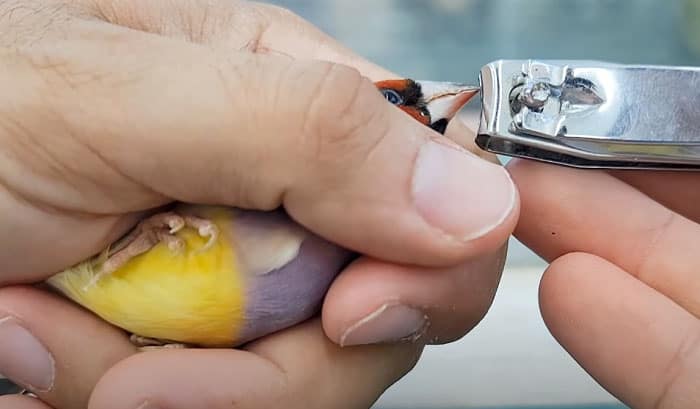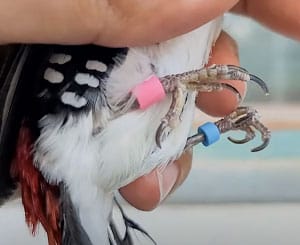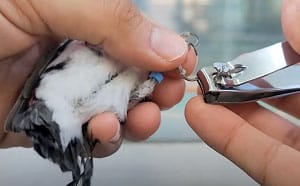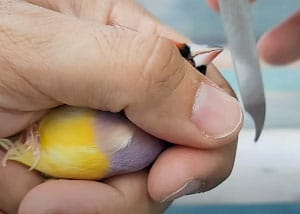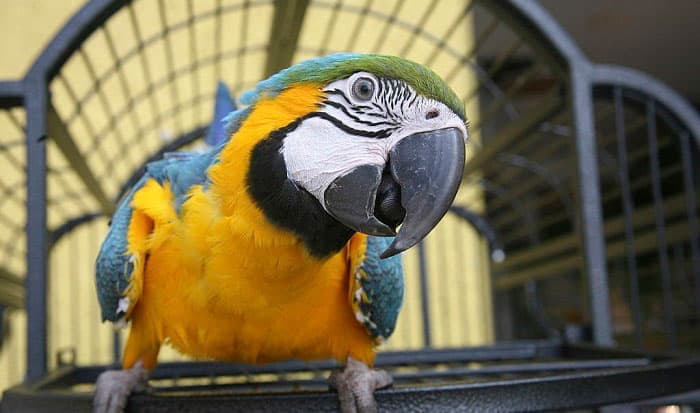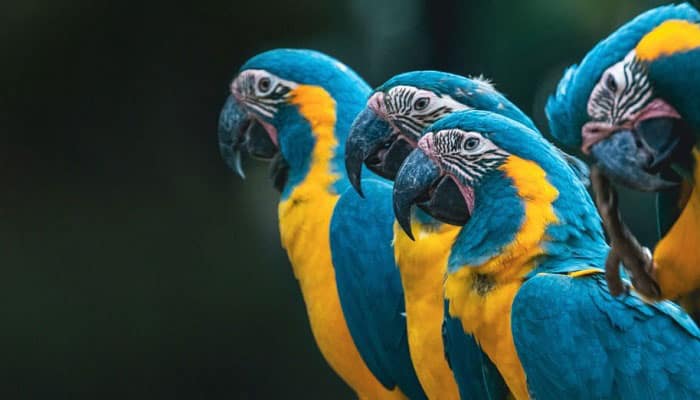A bird’s beak is an essential part of avian species. Birds use them for many things, such as eating, playing, feeding their young, and even building nests.
A beak is made of a keratin, which causes the beak to grow continuously. Birds in the wild constantly use their beaks when they forage, and being in nature allows for many opportunities to wear them down.
Trimming a bird’s beak is part of the maintenance care of pet birds. Read on and learn about the different ways on how to trim a bird’s beak.
Table of Contents
Guide to Trim a Bird’s Beak
A bird’s beak can develop abnormally or can become overgrown. The upper and lower beak of birds should typically be in opposition with each other or aligned for them to function properly during eating or picking up food.
A bird’s beak grows back after trimming, so some birds with abnormal beaks will need periodic bird beak trimming every 1-12 months.
Also, any discoloration on the surface, such as a green-beak bird, could signify a fungal infection. Such deformities and unusual lesions on a bird’s beak should be brought to the attention of a certified avian expert or bird veterinarian.
Take Your Pet to the Veterinarian for Trimming
This is the best way to treat an overgrown beak is by taking your bird to see a veterinarian. If you notice that your pet bird has an abnormal or overgrown bird beak it is time to call the vet.
Step 1: Look for a bird veterinarian in your area.
A directory of avian veterinarians exists. You can look up the nearest one in your area.
Step 2: Set an appointment
The clinic appointment will allow the vet to examine your bird’s beak to decide on the proper bird beak trimmer, depending on the condition of your bird’s beak.
This process allows identifying any underlying conditions that may have caused the beak abnormalities, such as medical conditions or nutritional problems, before doing the bird beak trimming.
The veterinarian will also determine during the initial appointment if your bird needs anesthesia or if it can handle the procedure awake.
Here are examples of abnormal beak conditions that may require trimming:
- Scissors beak or cross beak
This is a condition where the upper and lower beaks are not aligned causing difficulty in closing the beak. This is common in cockatoos and macaws and you can see how this looks in some bird beak images.
- Overgrown beak
This can be caused by trauma and health conditions such as viruses or bacterial or fungal infections. A budgie’s or parakeet’s beak can overgrow because of liver disease.
The upper and lower beak may overgrow, but it is more common for the upper beak to overgrow. This is a common problem of birds, cockatiel’s beaks tend to overgrow when it is not trimmed regularly.
- Prognathism or parrot’s beak
It is a common developmental condition in cockatoos, occurring when the tip of the upper beak falls on the tip or inside the lower beak. The issue was caused by hand-feeding and, thus, rarely seen in birds their parents raise.
Step 3: Monitor and aftercare
Be present during the procedure and observe while the veterinarian trims your bird’s beak. All procedures are done using sterile instruments. This procedure will take about 20 minutes.
Also, trimming is not generally painful for the bird, but the trip to the vet may stress out your pet. Give it time to rest and provide clean water and enough food.
Helpful Tips:
- Bird beak trimming should be performed only by a veterinarian experienced in treating birds. Never attempt to trim your bird’s beak with a clipper or wire cutter; this will cause pain and bleeding.
- If you are unsure if your bird’s beak is the correct length or overgrown, take your bird to the veterinarian to determine what is “normal” for your bird.
- You may ask about the trimming tools or materials he will use for the procedure, such as a bird beak filer or a grinding tool.
Employ Natural Ways of Beak Trimming
The bird’s beak will grow back, therefore, it is important you provide natural methods for your pet to reduce it without pain.
- Provide your bird with various textured food for his diet.
Do not put your birds on an exclusive bird seed diet. Such food will not cause the natural wearing of the beak, and bird seed is high in fat and can cause liver disease, which can manifest as beak overgrowth.
Provide pellets for your birds since eating and pecking on them can help trim the beak naturally.
Add fresh vegetables also and fruits to keep your bird healthy. This will also make their beaks healthy and prevent diseases that cause bird beak overgrowth and lesions.
- Let your bird play with chew toys or trimming toys
Trimming toys should be part of your pet bird’s life. Chew toys will keep your pet bird stimulated, and, at the same time, they will keep their beaks trimmed and healthy.
Different birds like different toys.
For parrots and parrotlet’s beaks, the toys to hone their beaks should be made of hard material such as acrylic, rawhide, or nylon.
For a budgie’s beak to become naturally trimmed, give them toys they can shred, such as paper or cardboard. This will keep them from having a beak too long than normal.
- Provide cuttlebones for your bird to peck on.
A cuttlebone can be placed in your bird’s cage so it can nip and peck on it. This will polish their beaks while ingesting cuttlebone provides your birds with the essential mineral, calcium.
Frequently Asked Questions
What is the best tool to use for a beak trim?
For avian veterinarians, the best grinding beak tool is a motorized Dremel drill. It is also one of the safest machines for this procedure commonly used by vets.
For smaller birds, such as cockatiels and parakeets, an emery board can do the job of trimming. An overgrown cockatiel beak can be trimmed manually until the ideal cockatiel beak length is achieved.
Do you need to cut a bird’s beak?
Not all birds need to have their beaks trimmed. As the procedure should only be done when there are overgrowth or beak abnormalities, as described above.
Some birds, such as parrots, are more prone to beak overgrowth than other species. They include budgies, cockatoos, cockatiels, and macaws. An African grey’s beak length is also prone to this and may need trimming.
Conclusion
A bird should have a normal length of beak to function and survive. Pet birds are prone to beak problems because they have fewer occasions to hone their beaks on natural surfaces.
To avoid this problem, beak trimming should be part of regular pet grooming and bird health maintenance. Now that you know how to trim a bird’s beak, you can address this problem early and provide your birds with the best beak care possible.

George and I became friends after a birdwatching trip with our new group. And we have been enjoying every adventure together. When he told me the idea of establishing a site that shares our experiences and fun, I immediately agreed. After trials and errors, here we have Thayerbirding.



